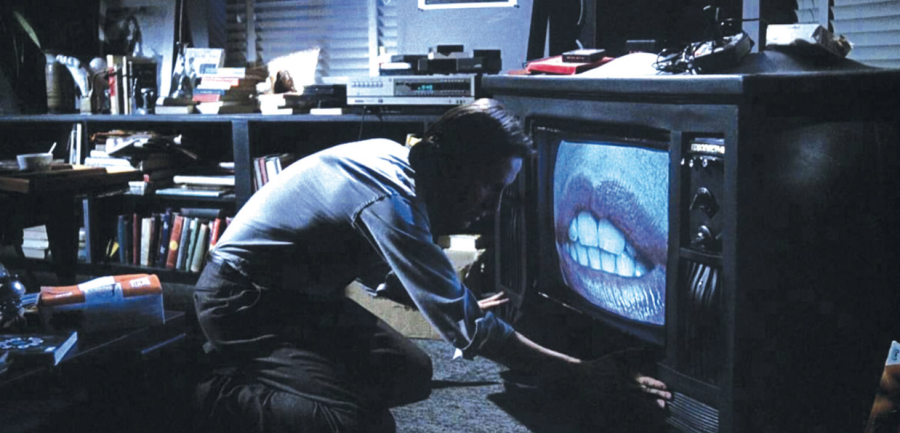Horror and Technology: How Humans Cope with a Posthumanist World
Horror films as a strategy to reconcile with being out-evolved.
Humans need to face the facts: through our technological advancements, mostly over the past sixty years, we have created a world we are no longer scientifically suited for. Our 24-hour news cycle and the ever-presence of television inundates us with more information than we can emotionally or even physically process. Our social circles, thanks to the internet, are now way beyond the size of what the human brain can understand as a community. The cars we created — and the infrastructure we designed for them — are responsible for killing 1.3 million of us every year.
In the last handful of decades, we have been forced to cope with our own technology changing what it means to live a human life. And our outlet for having to live in the modern world? Horror movies.
The possibility that the technology we developed will influence our evolution, our physical form, our capabilities, and, ultimately, the next stage of humanity, is something that we as humans often feel the need to examine through our creative work. Whether our response is rejecting it to identify with and hold onto being truly human or embracing it to explore options that redefine ‘truly human’ in a way that’s compatible with our modern world, most of the media that tackles this in a unique enough way to remain relevant in a technologically fast-paced world is horror. And most of that horror, whether coming through the lens of that rejection or embrace, is art made to cope with living in a world where we have been out-evolved by something we’ve created.
The focus on manmade technological advancements in horror existed long before the modern technological boom, before television, before cars, and before we were truly out-evolved. In Mary Shelley’s Frankenstein, scientific advancements are called into moral question when a possible new form of humanity — sprouting from manmade technology — is shocked to life. H.G. Wells considers the question in his The Island of Doctor Moreau, when his protagonist is confronted by a new definition of human society: a league of beasts given human thought and stature by what was, at the time, modern science in Wells’ world. This theme has been threaded through horror media since the Western industrial revolution.
A lot of the recent horror that has approached this theme is visual, as is most successful horror after the start-up of the American film industry. Films like Wes Craven’s horror-comedy Shocker (1989) and Shinya Tsukamoto’s arthouse Tetsuo: the Iron Man (1989) consider technology influencing the human experience in wildly different ways, but both are decidedly negative and horrific. In Shocker, Craven’s nightmare comes from the television and travels through wires and radiowaves. A serial killer put to death by electric chair continues his spree with the assistance of that technology.
Tsukamoto’s film goes further, exploring the physical reflection of technology overtaking our world on the canvas of the human body. A man finds himself disturbingly overgrown by metal, and he slowly becomes more and more mechanical against his will. This is not done in a vague ‘robotic’ sense, but with real machines from the world around us; he is painfully augmented with car-like features, with power drills. Modern technology destroys the man’s body and soul, and he in turn destroys the people around him.
This is the technology we have invented. This is how it undoes us. It’s a pretty straightforward interpretation, one that really makes you question the technology around you and how big a part it plays in your life. Craven and Tsukamoto, among other horror directors like them, grab the audience, shake them by the shoulders, and say, look at what you invented. Look at what you live with. Should we really be as passive as we are while our technology runs our world and infringes on our — in some cases physical — humanity?
However, not every dissection of technology and how it impacts us in horror is entirely negative. Every one is markedly disturbing. But some films, and some directors, have a slightly more obsessive view of technology. A grim fascination, almost and sometimes explicitly to the point of fetishization. David Cronenberg, a Canadian cult horror writer and director, champions a more nuanced look at modern technology throughout his body of work, most notably in his films Videodrome (1983) and Crash (1996).
These films don’t present technology uncritically. In both cases, the involvement of technology directly sends the characters into violent downward spirals, but Cronenberg’s characters have a different response than Tsukamoto’s. What they are going through is horrific, and they desire it.
In Crash, adapted from J.G. Ballard’s psychosexual commentary novel of the same name, the protagonist meets a mysterious ‘doctor’ after surviving a chance car accident. He is slowly drawn into this underground counterculture world where a small group of people eroticize the car crash. More specifically, they eroticize the melding of human and technology that the car crash provides. Over the course of the film, this obsession takes multiple characters’ lives and twists how they view each other, themselves, and their humanity. They use the physical trauma of the car crash to expand the possibilities of the human canvas.
Videodrome focuses on a man whose mind is being undone by untraceable broadcasts of violent films over the television. Slowly, his body undergoes changes as well that physically meld him with technology — in this case, a gun. Perhaps most interestingly, once he goes through that gruesome fusion, the other character ‘on his side’ reveres him for it. He is “the new flesh,” he is man and technology finally in harmony, a new form of life fit for the future. Even though as an audience, we can see that who he was as a character, as a person, is destroyed, within the film, the transformation is seen as an asset.
So is Cronenberg saying we should embrace the spots where our technology encroaches on our human lives and adapt, evolve? Are Craven and Tsukamoto saying we should burn it all and live free without it?
The reality is the meanings of these films, and why they were created, are a little deeper than ‘technology = bad’ or ‘technology = good.’ Techno-anxiety is a term that has been around for a while in academic circles, and describes, at large, humanity’s unease with how integrated into our lives technology has become. On an individual level, techno-anxiety can mean anything from an intense fear of computers to feeling ill at ease around listening devices like Amazon’s Alexa to being hesitant to buy a self-driving car.
Most of us probably experience some form of techno-anxiety in our day to day lives. Perhaps these films aren’t didactic, aren’t these directors telling us, this is how I feel about technology and this is how you should feel too. They’re an outlet for that techno-anxiety: art as a coping mechanism.
In a paper for Ephemera, researchers and professors Mike Saren and Norah Campbell discuss posthumanism, something that all of these films deal with in their own ways. They describe it as “an aesthetic that blends three elements – the primitive, technology and horror.” Horror and technology go hand in hand in our 21st century brains, a relationship that Saren and Campbell elaborate on: “Western humanist versions of technology tend to create a master–servant dialectic and anything that threatens this divide invokes horror.”
We should be able to control our technology, since we created it, says the standard humanist mind. And whenever it is controlling us, impacting us, altering us? Horror. Exploring that techno-anxiety in film helps us cope. Suddenly, even if technology is destroying fictional people or a fictional world, we, the directors, the writers, the viewers, are back in control of the narrative.
The choice to take technology as far as it has been taken was never the everyday person’s. It seems to happen above us, in the businesses of billionaires and the governmental offices that approve their advancements. Frequently over the decades, there seems to be that choice: do we keep inventing, improving, or do we stop now? How far is too far? And every time, the answer — to progress, always to progress — is arrived at without consulting the common man.
As regular people, what our technology does and is capable of doing is truly out of our hands. The technological horror subgenre does what it can to give us at least a sense of agency back by letting us write how our technology changes us, what it means for us, and what happens to our humanity. For the first time, we choose whether or not to embrace our out-evolution. We find empowerment in choosing to see ourselves destroyed by technology or choosing to see ourselves adapt beside it. And, in a sense, that’s really all we can do.






